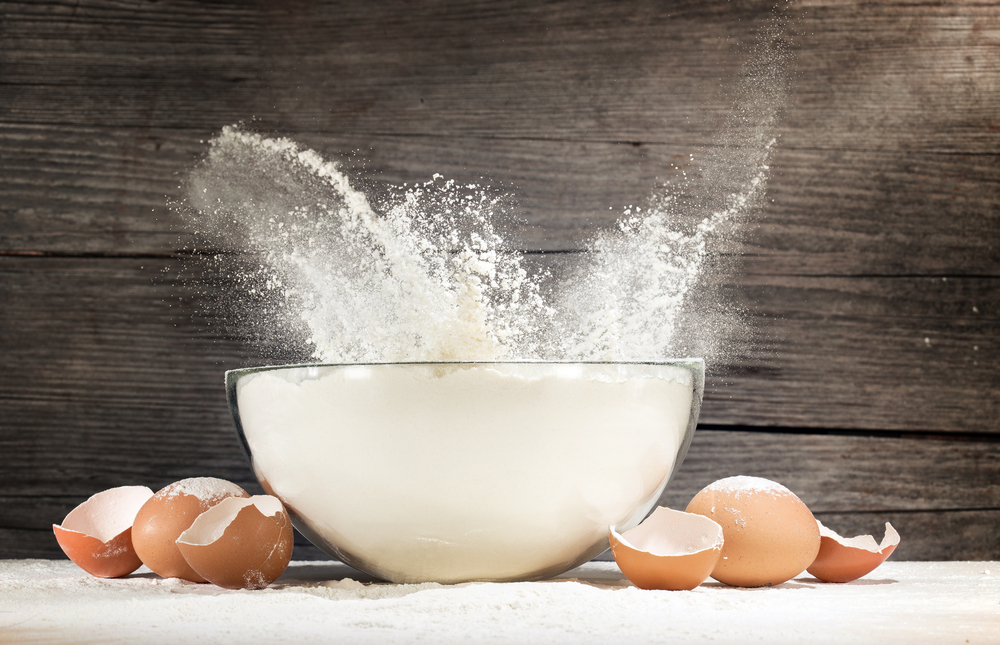As a bread lover, I’ve often wondered about the difference between pumpernickel and rye bread. Both are dark, dense, and delicious, but what sets them apart?
In this article, I’ll explore the origins, preparation, taste, and nutritional content of these two breads to help you understand the difference.
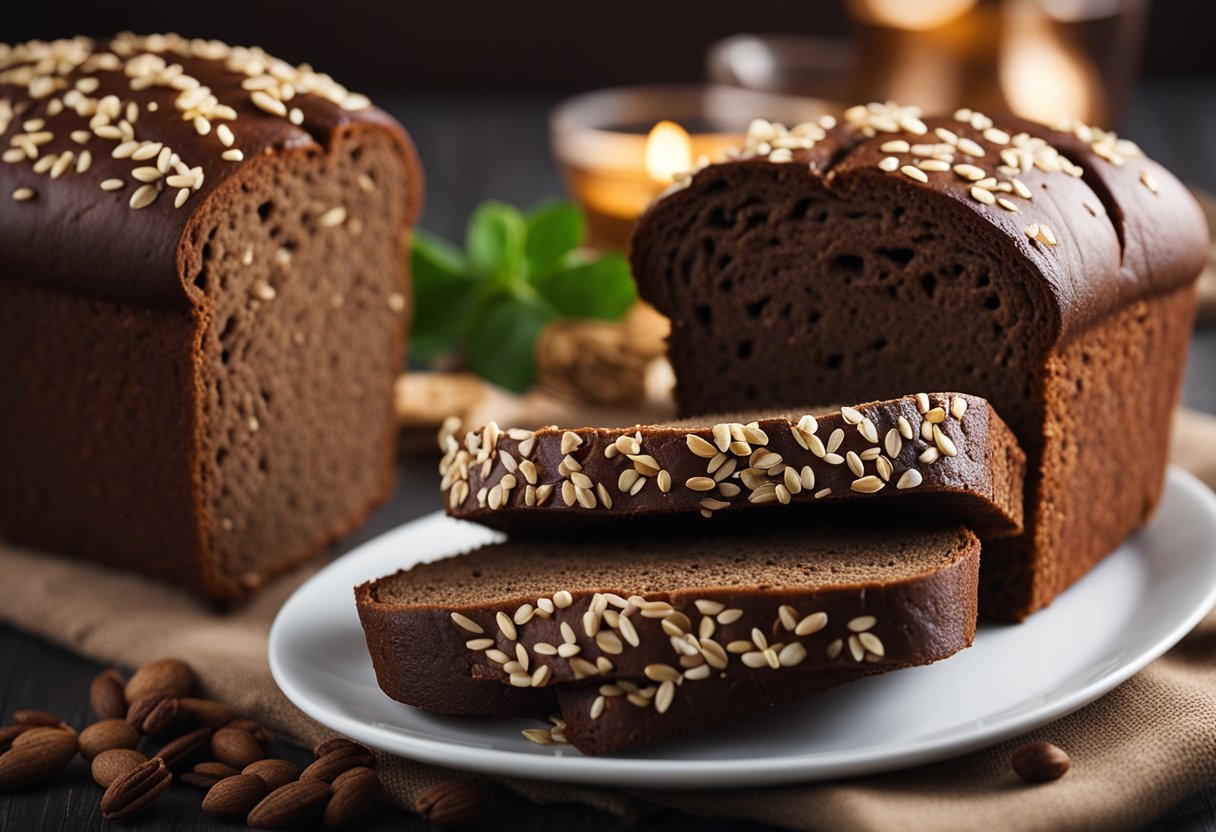
Pumpernickel and rye bread are both made with rye flour, but there are some key differences in their preparation and baking process that give them distinct flavors and textures.
Pumpernickel bread is made with coarsely ground rye flour and baked at a low temperature for a long time, which gives it a dark color and a slightly sweet and sour taste.
Rye bread, on the other hand, is made with finely ground rye flour and baked at a higher temperature for a shorter time, which gives it a lighter color and a milder flavor.
If you’re curious about the nutritional content and health benefits of pumpernickel and rye bread, or if you’re looking for ideas on how to use and pair them, keep reading.
By the end of this article, you’ll have a better understanding of the difference between these two delicious breads and how to enjoy them to their fullest.
Key Takeaways
- Pumpernickel and rye bread are both made with rye flour, but differ in their preparation and baking process, resulting in distinct flavors and textures.
- Pumpernickel bread is coarsely ground and baked at a low temperature for a long time, giving it a dark color and slightly sweet and sour taste, while rye bread is finely ground and baked at a higher temperature for a shorter time, resulting in a lighter color and milder flavor.
- Both pumpernickel and rye bread are packed with dietary fiber and essential nutrients, making them a healthy and delicious addition to any meal.
Understanding Pumpernickel and Rye Bread
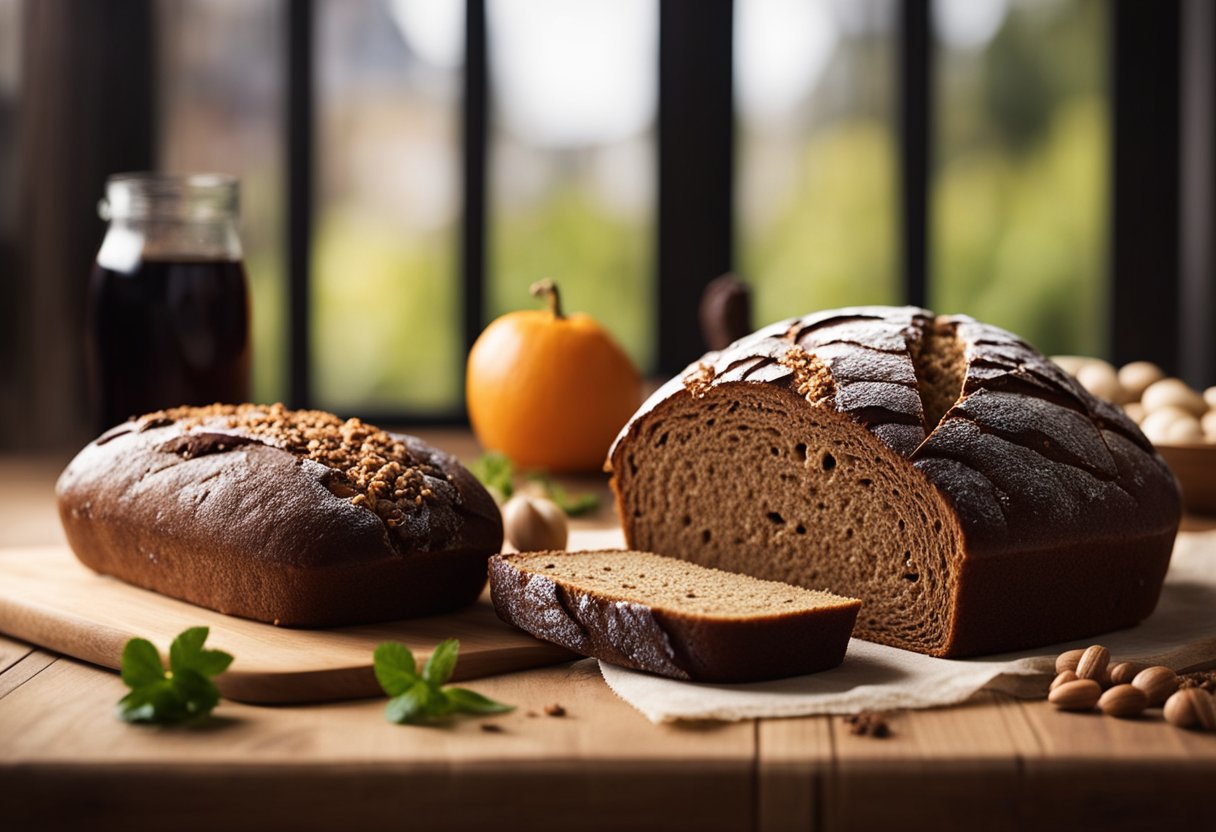
As a bread lover, I have always been curious about the differences between pumpernickel and rye bread. Both types of bread are made from rye flour, but they have distinct differences that set them apart.
Pumpernickel bread is a dense, dark bread that originated in Germany. It is made from whole rye berries that have been coarsely ground.
The bread has a distinct flavor that is both sweet and sour, and it is often used for sandwiches or as a side for soups and stews. Pumpernickel bread is also known for its long shelf life, which is due to the fact that it is baked at a low temperature for a long time.
Rye bread, on the other hand, is made from a combination of rye flour and wheat flour. It is lighter in color than pumpernickel bread and has a milder flavor. Rye bread is also denser than wheat bread and is often used for sandwiches or as a side for soups and stews.
Both pumpernickel and rye bread are packed with dietary fiber and essential nutrients. Rye bread is particularly rich in germ and bran, which are the most nutritious parts of the grain.
Pumpernickel bread, on the other hand, is made from whole rye berries, which are high in fiber and antioxidants.
When it comes to the types of bread, there are many different varieties of rye bread. Rye meal and rye berry are two common forms of rye flour that are used to make rye bread.
Rye meal is made from finely ground rye berries, while rye berry is made from whole rye berries. Whole rye berries are also sometimes used to make pumpernickel bread.
In conclusion, pumpernickel and rye bread are both delicious and nutritious types of bread that are made from rye flour. While they share some similarities, they also have distinct differences in terms of flavor, texture, and nutritional content.
Origins and Regional Variations
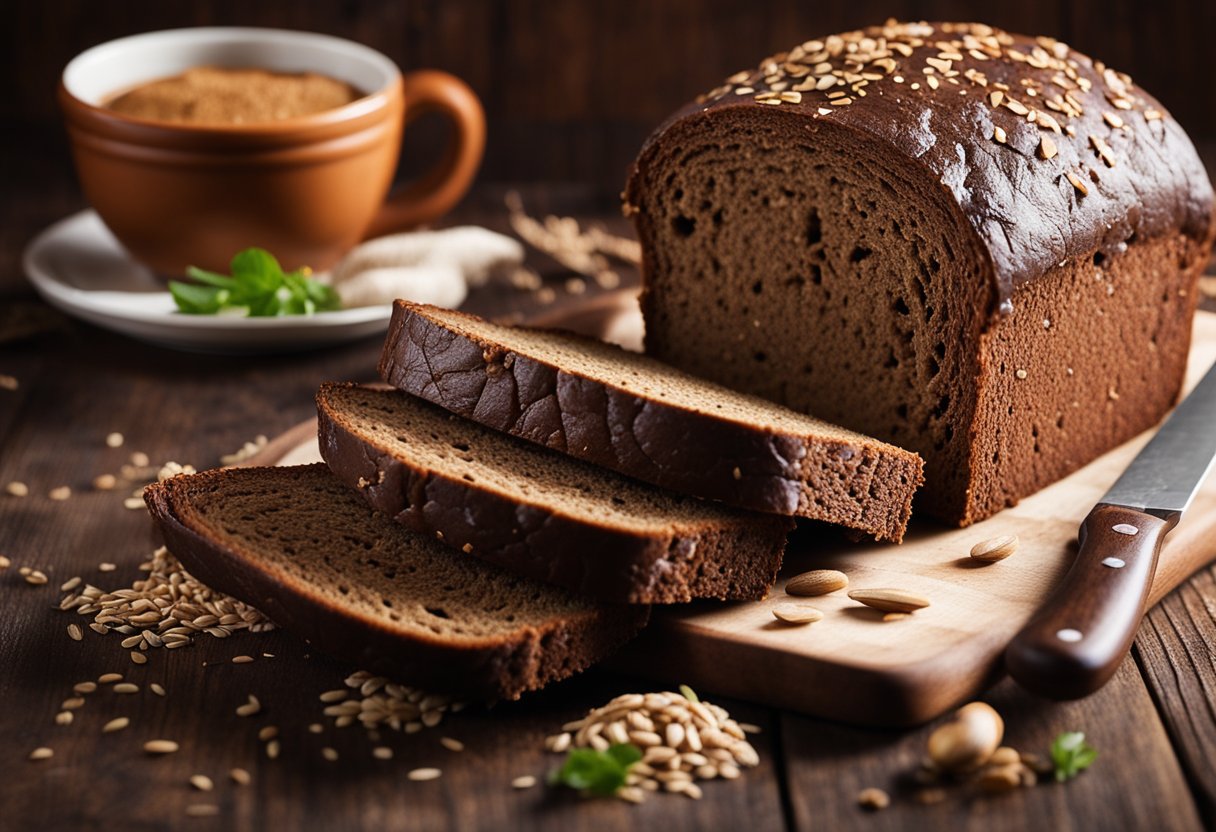
Rye bread has been a staple of European countries for centuries. It is believed that rye bread was first made in Germany during the Middle Ages, where rye was a popular grain due to its hardiness and ability to grow in colder climates.
Pumpernickel bread, on the other hand, is a type of rye bread that originated in Westphalia, Germany.
The origins of pumpernickel bread are somewhat unclear, but it is believed to have been first made in the 17th century.
The name “pumpernickel” is derived from the German words “pumpern” and “nickel,” which mean “fart” and “goblin,” respectively. This name was given to the bread because it was believed to cause flatulence.
There are regional variations of both rye and pumpernickel bread. In Germany, for example, there are many different types of rye bread, including light rye, dark rye, and sourdough rye. Each type of rye bread has its own unique flavor and texture.
Jewish rye bread is a popular variation of rye bread that is made with caraway seeds and is typically denser than other types of rye bread. This bread is often used to make sandwiches, such as the classic pastrami on rye.
In addition to Germany, rye bread is also popular in Scandinavian countries, where it is often served with fish or cheese. In Finland, rye bread is a staple food and is typically made with a sourdough starter.
Overall, while both rye and pumpernickel bread are made with rye flour, there are many regional variations in flavor and preparation methods.
Preparation and Baking Process
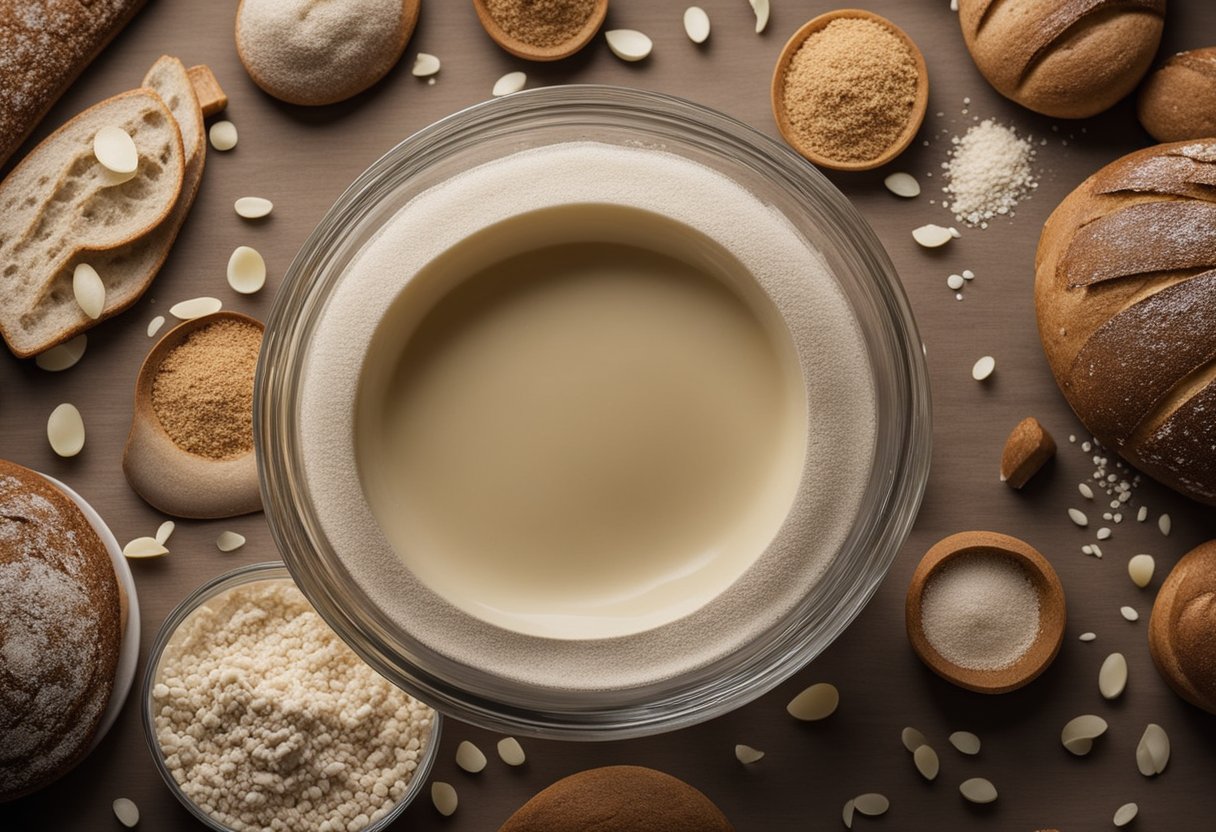
When it comes to the preparation and baking process, pumpernickel and rye bread differ significantly. Both breads use rye flour, but the preparation methods and baking process are what set them apart.
To make pumpernickel bread, coarsely ground rye berries are mixed with a sourdough starter and water to form a dense dough. The dough is then left to ferment for up to 24 hours. After fermentation, the dough is shaped and placed in a loaf pan.
Pumpernickel bread is typically baked in a steam oven at low temperatures for up to 24 hours. The slow baking process gives the bread its dense texture and dark color.
On the other hand, rye bread is made using a combination of rye and wheat flour. The dough is typically mixed with yeast and water and left to rise for a few hours.
The dough is then shaped and placed in a flat pan. Rye bread is often baked at higher temperatures than pumpernickel bread and for a shorter time.
The baking process for pumpernickel bread is much longer and requires more attention than rye bread. The steam baking process used for pumpernickel bread also gives it a unique texture and flavor that cannot be replicated with other breads.
Overall, the preparation and baking process for pumpernickel and rye bread differ significantly. Pumpernickel bread requires a longer fermentation and baking process, while rye bread is typically baked at higher temperatures and for a shorter time.
Types of Rye and Pumpernickel Bread
When it comes to rye bread, there are several different types to choose from, including light rye, dark rye, and marbled rye. Light rye bread is made with a combination of rye flour and wheat flour, resulting in a lighter color and milder flavor.
Dark rye bread, on the other hand, is made with mostly rye flour and has a stronger, more robust flavor.
Marbled rye bread is a combination of light and dark rye bread, which gives it a unique, swirled appearance. This type of bread is often used for sandwiches, such as the classic Reuben.
Pumpernickel bread, on the other hand, is made with coarsely ground rye flour and is typically darker and denser than other types of rye bread. It has a distinct, earthy flavor and is often used in German cuisine.
In addition to these types of bread, there are also variations in the types of rye flour used. White rye flour is made from the endosperm of the rye berry and is lighter in color and milder in flavor than darker rye flours, which include the bran and germ of the rye berry.
Overall, the differences between rye and pumpernickel bread come down to the type of flour used, the preparation method, and the regional variations in flavor.
Whether you prefer a lighter, milder rye bread or a darker, more robust pumpernickel, there’s a type of bread out there to suit your taste.
Taste and Texture Comparison
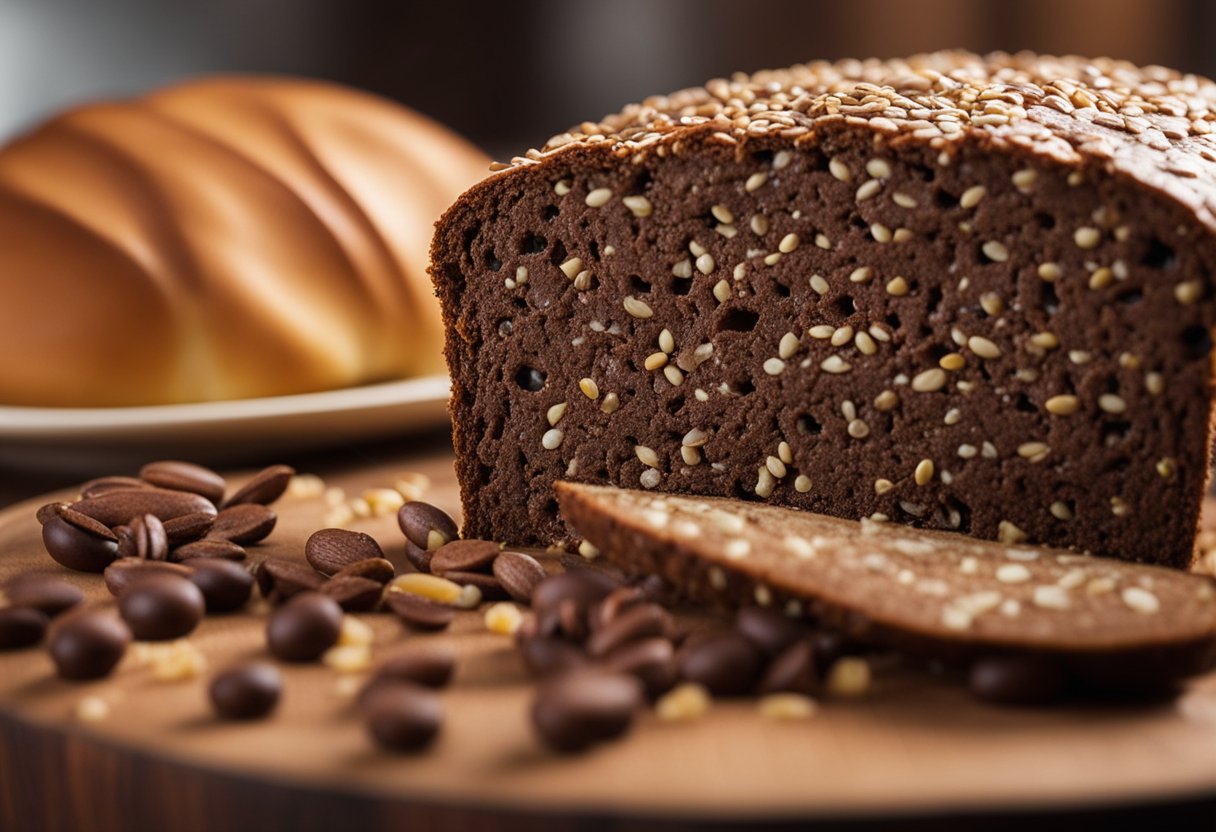
When it comes to taste and texture, pumpernickel and rye bread are both quite different from each other. Rye bread has a robust, slightly sour taste that is often described as tangy.
On the other hand, pumpernickel bread has a more complex flavor profile that includes sweet and earthy flavors. The strong taste of pumpernickel bread is generally stronger than that of rye bread.
In terms of texture, both bread types are dense and heavy, but pumpernickel bread is denser than rye bread. Pumpernickel bread also has a more compact crumb, while rye bread has a slightly more open crumb.
This difference in texture is due to the fact that pumpernickel bread is made with a coarser grind of rye flour than rye bread.
One of the reasons why pumpernickel bread has a more complex flavor profile is because it is often made with a mixture of rye flour, wheat flour, and other ingredients. This combination of ingredients gives pumpernickel bread its distinctive flavor and texture.
Overall, the taste and texture of pumpernickel and rye bread can be quite different from each other. While rye bread has a robust, tangy flavor and a slightly open crumb, pumpernickel bread has a more complex flavor profile and a dense, compact crumb.
Nutritional Content and Health Benefits
When it comes to nutritional content, there are some differences between pumpernickel and rye bread.
According to Foodstruct, pumpernickel bread has more manganese, copper, and phosphorus than rye bread. However, rye bread has more selenium and vitamin B1.
Both pumpernickel and rye bread are good sources of dietary fiber, which can help with blood sugar control, digestive health, and heart health.
According to Verywell Fit, a medium slice of pumpernickel bread provides about 2.1 grams of fiber and less than one gram of sugar. The rest of the carbohydrates in pumpernickel is starch.
In addition to fiber, pumpernickel and rye bread are also good sources of other essential nutrients, such as iron and magnesium.
According to Healthline, rye bread is high in fiber and may help improve heart health, digestive health, and blood sugar control. It is also a good source of micronutrients like magnesium.
Overall, both pumpernickel and rye bread can be a healthy addition to your diet, especially if you choose whole grain varieties. They are both good sources of fiber, essential nutrients, and can offer a range of health benefits.
Usage and Pairings
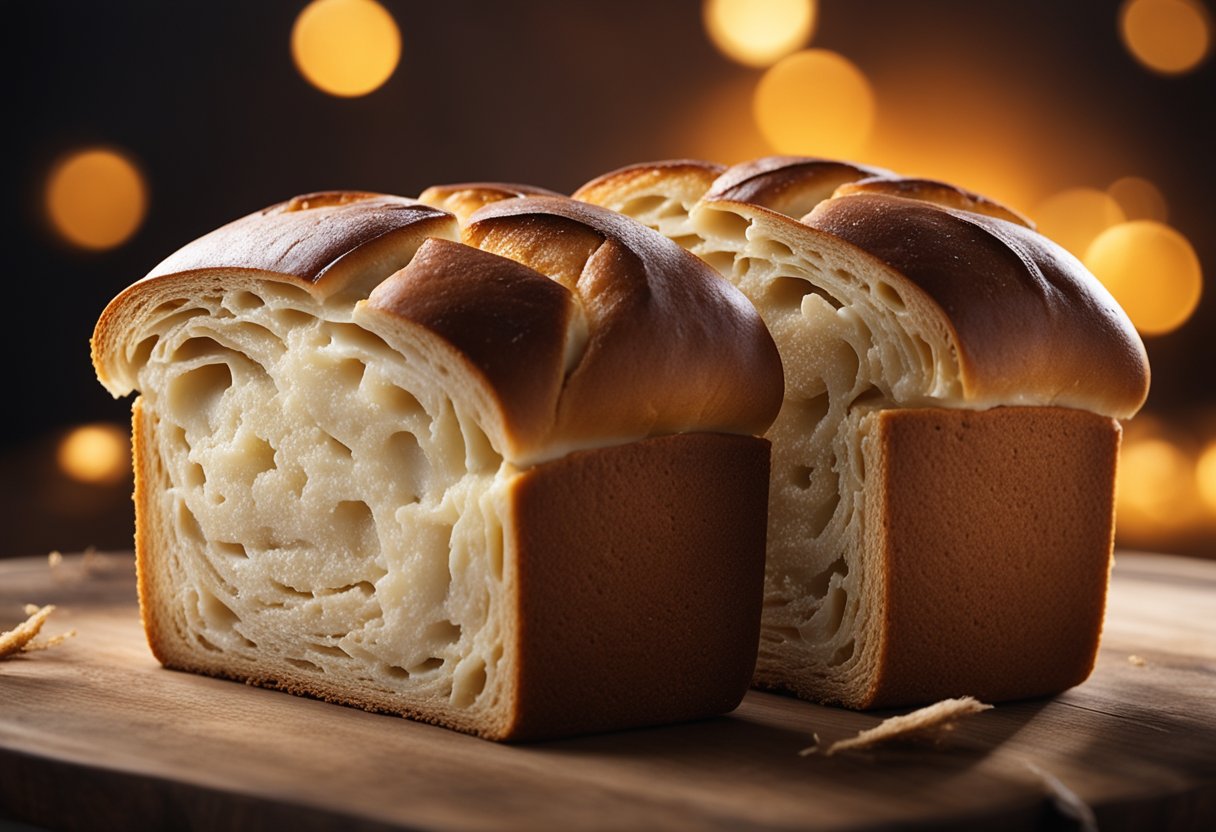
When it comes to usage and pairings, both pumpernickel and rye bread have their own unique characteristics that make them suitable for different dishes and occasions.
Pumpernickel bread is often paired with strong flavors such as smoked salmon, roasted meats, and aged cheeses.
Its dense texture and slightly sweet taste make it a great choice for sandwiches, especially when paired with cream cheese and topped with cucumber or tomato slices. Pumpernickel bread also works well as a base for canapés or as a crunchy topping for salads.
Rye bread, on the other hand, has a more complex flavor profile and can be used in a variety of ways. It pairs well with hearty soups and stews, as well as with smoked meats and pickled vegetables.
Rye bread also works well as a base for open-faced sandwiches, topped with sliced hard-boiled eggs, pickled herring, or thinly sliced roast beef.
For those who prefer a milder taste, rye bread can be mixed with wheat flour to create a lighter texture and less intense flavor. Rye bread can also be used as breadcrumbs for coating meats or as a topping for casseroles.
When it comes to personal preference, both pumpernickel and rye bread can be enjoyed in a variety of ways. Some people prefer their pumpernickel bread coarsely ground, while others prefer a smoother texture.
Similarly, some people prefer their rye bread with added molasses or barley malt for a sweeter taste, while others prefer a more savory flavor.
Overall, the best uses for rye bread and pumpernickel bread depend on personal taste and the dish being prepared. Both types of bread offer unique flavors and textures that can enhance a variety of dishes, from sandwiches to salads to soups.
Demand and Supply Factors
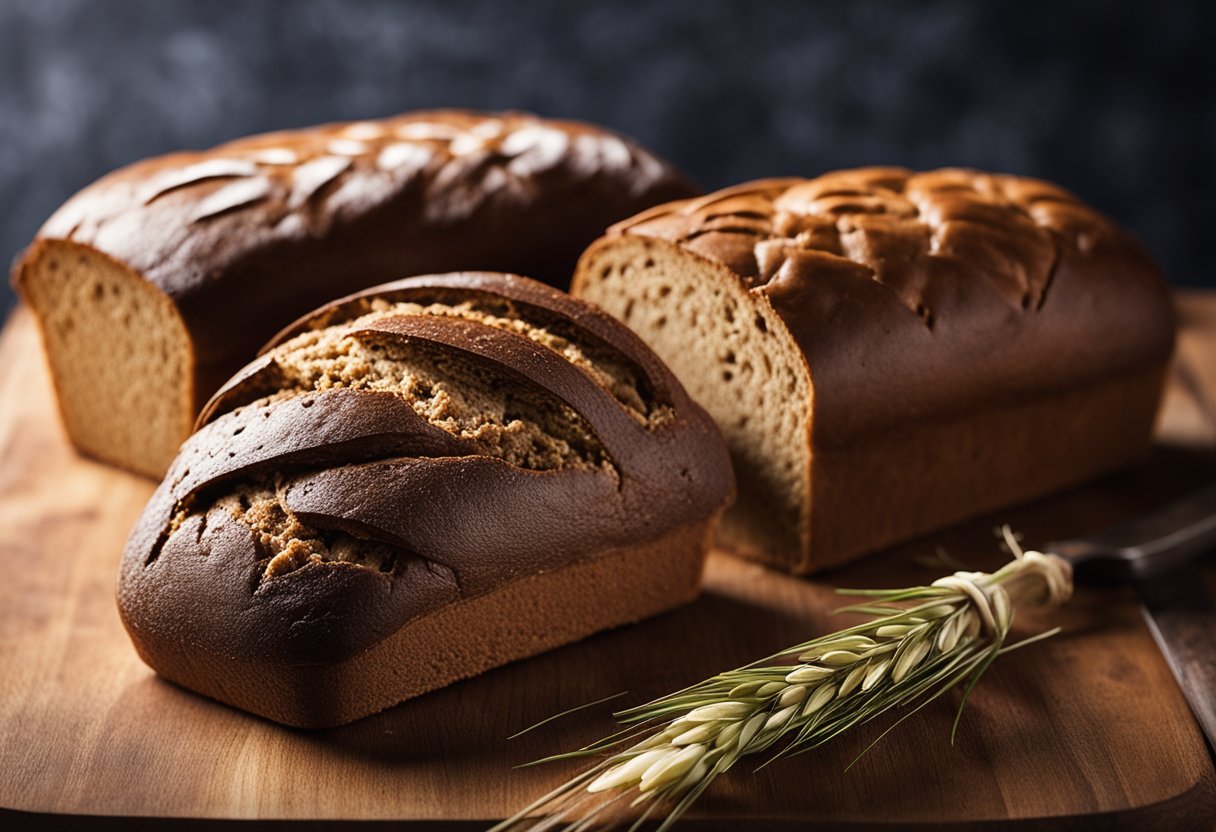
As a bread lover, I have always been curious about the differences between pumpernickel and rye bread.
In order to understand these differences, it is important to consider the demand and supply factors that affect the production and consumption of these breads.
The demand for rye bread has been steadily increasing in recent years due to its health benefits, including its high fiber content. However, crop failures can have a significant impact on the availability of rye flour, which is the main ingredient in rye bread.
This can lead to price increases and shortages, making it difficult for bread bakers to meet the demand for rye bread.
On the other hand, pumpernickel bread has a more niche market due to its distinct flavor and texture. It is often associated with German cuisine and is a popular choice for deli sandwiches. However, this limited demand means that pumpernickel bread is not as widely available as rye bread.
Gastronomic trends can also have an impact on the demand for these breads. For example, the popularity of artisanal breads has led to an increase in demand for sourdough rye bread, which is made using a natural fermentation process.
Bakeries that specialize in artisanal breads may choose to focus on rye bread production to meet this demand.
Overall, the demand and supply factors that affect the production and consumption of pumpernickel and rye bread are complex and multifaceted. However, by understanding these factors, we can gain a deeper appreciation for these delicious and nutritious breads.
Related posts:
Frequently Asked Questions
What are the different types of rye bread?
Rye bread comes in different varieties, such as light rye, dark rye, and marbled rye. Light rye bread is made with a mixture of rye flour and wheat flour and has a milder taste.
Dark rye bread is made with only rye flour and has a stronger flavor. Marbled rye bread is a combination of light and dark rye bread.
What are the nutritional differences between pumpernickel and rye bread?
Both pumpernickel and rye bread are high in dietary fiber and essential nutrients such as iron, magnesium, and phosphorus.
However, pumpernickel bread is denser and has a higher sugar content than rye bread, which can affect its nutritional value.
Is pumpernickel bread healthier than rye bread?
There is no clear answer to this question as both breads have their own unique nutritional benefits.
However, pumpernickel bread is denser and has a higher sugar content than rye bread, which can affect its nutritional value. It is recommended to choose bread based on personal preferences and dietary needs.
Can pumpernickel bread spike blood sugar levels?
Pumpernickel bread has a lower glycemic index than some other types of bread, meaning it is less likely to cause a spike in blood sugar levels.
However, pumpernickel bread is denser and has a higher sugar content than rye bread, which can affect its glycemic index.
What are the benefits of eating rye bread?
Rye bread is high in dietary fiber and essential nutrients such as iron, magnesium, and phosphorus. It may also have potential health benefits such as reducing the risk of heart disease and aiding in weight management.
Does rye bread have anti-inflammatory properties?
Rye bread contains lignans, which are plant compounds that have been linked to anti-inflammatory properties. However, more research is needed to fully understand the potential anti-inflammatory benefits of rye bread.






